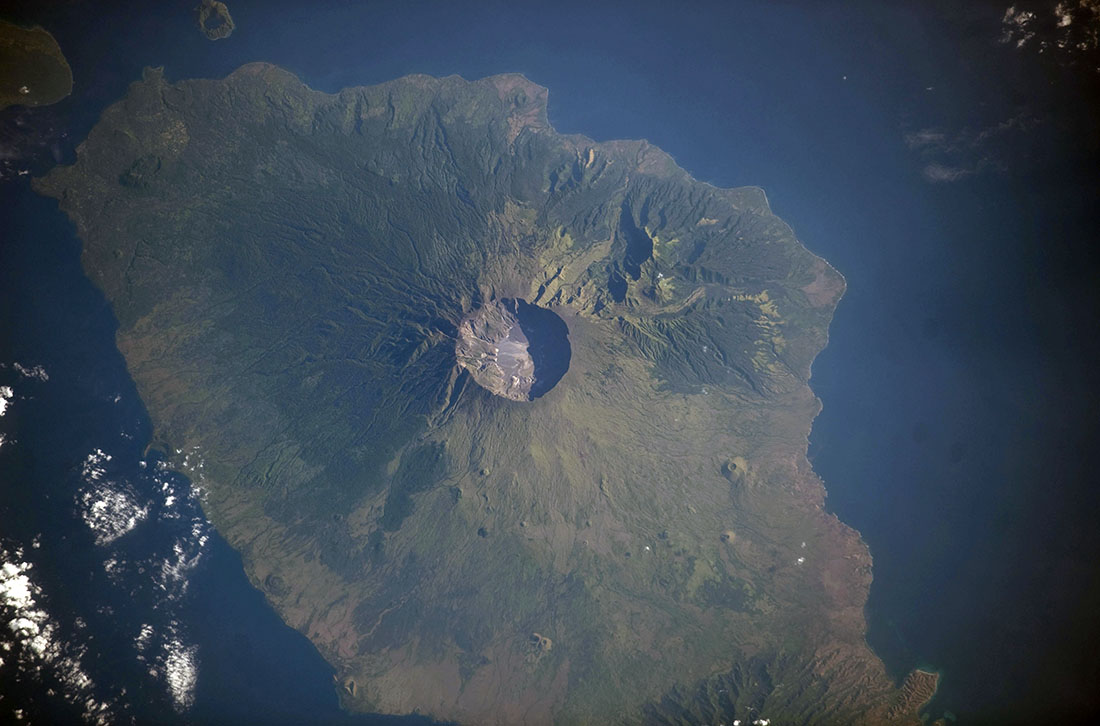What It Takes to a Volcano to Impact Earth’s Climate
Posted on Categories Discover Magazine

Whenever images of giant ash plume show up in the news, one of the first questions that arrives in my inbox is whether that eruption will impact the Earth’s climate. It turns out that it takes more than just an ash column that towers 100,000 feet (30 kilometers) over the volcano to drive the needle when it comes to our planet’s climate. What might be the most important factor for an eruption to impact climate?
First, a few volcano-climate basics. It isn’t the ash that causes Earth’s climate to change after a massive eruption. The ash, which is volcanic glass, doesn’t stay in the atmosphere for long, maybe hours to weeks. It is the accompanying gases and aerosols (droplets) that come with an eruption that do the real whammy on weather and climate.
The biggest culprit is sulfuric acid. This is produced when the sulfur dioxide emitted by the volcano reacts with water in the atmosphere. The sulfuric acid droplets act as a veil on the Earth’s lower atmosphere, absorbing hear high in the stratosphere. This brings on lower temperatures near the Earth’s surface — volcanic cooling. This process is what led to the “year without a summer” prompted by the 1815 eruption of Tambora in Indonesia (a VEI 7 event).
There are other gases and aerosols emitted as well, like carbon dioxide, water, chlorine, fluorine. However, these rarely have the same climate impact as the sulfur that is released by big volcanic eruptions (so just stop right there if you want to claim volcanoes are the culprit for modern climate change).
The amount of sulfur released by giant volcanic eruptions is staggering. The 1991 eruption of Pinatubo in the Philippines threw 20 million tons of sulfur dioxide into the atmosphere. The eruption of Tambora mentioned above may have been closer to 100 million tons. Even bigger was the 1783-84 Laki fissure eruptions in Iceland that topped 120 million tons.
The impact these volcanoes had on climate are roughly proportional to the amount of sulfur. Pinatubo saw global average atmospheric temperatures drop about a half degree (C) and the troposphere (the lower 5-9 miles / 8-15 kilometers of the atmosphere) cooled 4 degrees (C)! Tambora was around a full degree (C) for a few years after the eruption. That doesn’t sound like a lot until you consider that is an average from around the globe. Think how much change it might take to cool the entire atmosphere by one degree!
However, we’ve had big eruptions that didn’t seem to leave such a dramatic mark. The 1902 eruption of Santa Maria was a VEI 6 released 11 million tons of sulfur, but there was no discernible climate anomaly. That is roughly the same amount of (elemental) sulfur as Pinatubo but with no change.
The two patterns do emerge in the record of giant eruptions and their climate impact. One is just how tall the ash plume reached. If you can dump volcanic aerosols high into the atmosphere, they will stay up there longer, usually for years! All those sulfur aerosols in the stratosphere will cause the troposphere to cool, so the longer they linger (and the more there are), the deeper the cooling.
The other big factor is location. When a volcano in far northern latitudes like Alaska or the Kamchatka Peninsula in eastern Russia erupts, the ash and aerosols tend to get stuck in the northern hemisphere. This means that the sulfur compounds in the stratosphere are not as widely spread, so less energy from the sun is absorbed and the lower atmosphere doesn’t get as cool.
However, you put that same eruption closer to the equator — let’s say Indonesia or Ecuador — and those aerosols can spread across both hemispheres, leading to much more surface cooling. That’s why when the signal of sulfur in the atmosphere is captured in ice cores on both cores, we know that it was a major eruption … and it likely happened near the equator.
The take home message here is that we can’t assume that every large eruption will impact the same way. The amount of sulfur in the magma, the location of the volcano on the globe and how tall that eruption plume reaches into the atmosphere will all play roles in whether we should expect some cooler years or whether it will be business as usual.